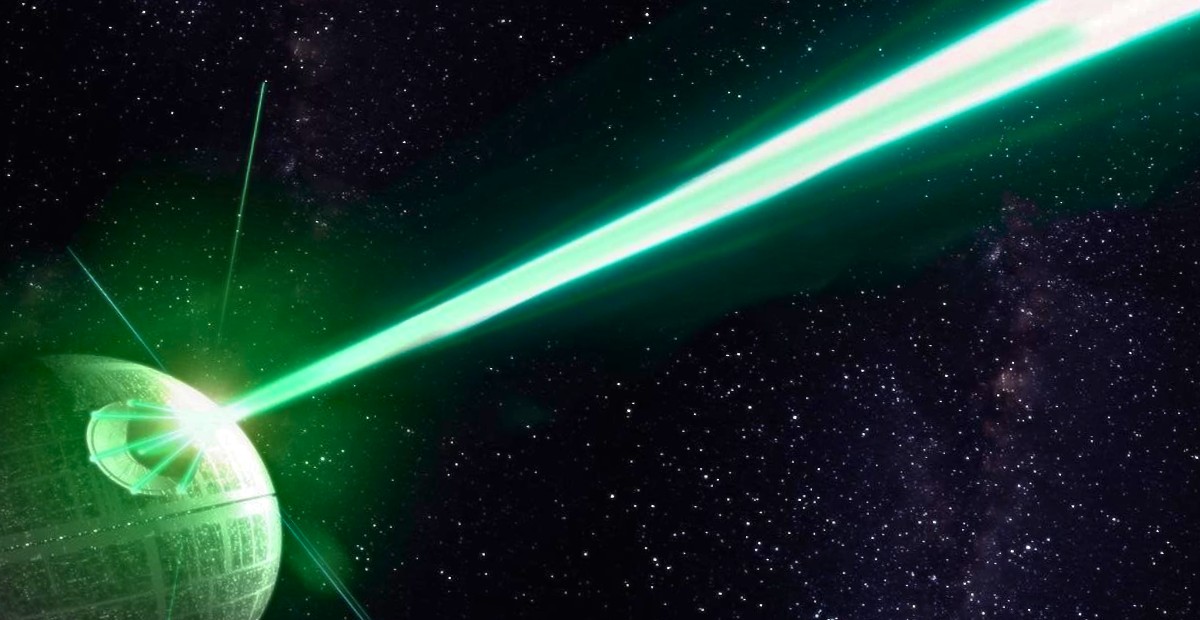The Death Star was a moon-sized battle station with the power to destroy planets—something you’d think would be impossible to hide. But for years, the Empire managed to keep it out of sight, even from many of its own people. Here’s how they pulled it off.
1. Everything Was Compartmentalized
The Empire divided the Death Star project into countless separate pieces, and most people working on it only knew about their specific task. That included everyone from scientists and engineers to pilots and construction crews. They didn’t know what their work was for—and they were never told.
In Andor Season 1, prisoners on Narkina 5 were assembling parts of the superlaser, but none of them had any idea what those parts would become. Even Galen Erso, the lead scientist behind the superlaser, originally believed he was developing energy research, not a weapon. That lie held up for years. His story, told in Catalyst: A Rogue One Novel, shows how deep the deception ran.
The same strategy applied to Imperial officers. The ISB’s Yularen wasn’t briefed on the project until much later. Even Tarkin didn’t know he would be placed in charge until it was nearly finished. Only a small circle—Palpatine, Krennic, and a few trusted commanders—understood the full scope.
2. Slave Labor and Droids Did the Dirty Work
Most of the construction wasn’t done by regular workers. The Empire relied heavily on droids and slave labor, which made it easier to keep secrets—and eliminate them afterward.
The Death Star’s earliest phases took place above Geonosis. The Geonosians, who helped design and build the station, were kept under military lockdown until they were no longer useful. Then the Empire wiped them out entirely. This genocide is confirmed in Star Wars Rebels, in the Ghosts of Geonosis episode, where it’s revealed that Saw Gerrera found only one surviving Geonosian.
Later, the Empire also used Wookiee slaves and political prisoners like those seen in Andor. Droid labor was used for much of the space-based assembly. Droids could be memory-wiped or reprogrammed, and slaves had no rights. If someone asked too many questions or became a risk, they were removed.
3. The Galaxy’s Size Helped Hide It
The Star Wars galaxy is staggeringly large, with millions of member systems and over 100 quadrillion sentient beings. That scale worked in the Empire’s favor. Even if a million people were involved in the Death Star’s construction, they would still represent a microscopic fraction of the galactic population—barely enough to cause ripples. The same logic applied to logistics. Massive amounts of doonium and iridium could be diverted from the market without drawing suspicion if done cleverly enough.
Thrawn was one of the few who saw the anomaly. He didn’t have access to the project, but he noticed the signs—specifically, that critical materials were vanishing, yet no official shipbuilding or military initiative could account for it. In Thrawn (2017), he tells Eli Vanto:
“Some other project,” Thrawn said thoughtfully. “Something large, and unannounced.”
“Unless the project has been made invisible even to them.”
Thrawn suspects that the disappearance of these materials is tied to something far bigger than the standard Imperial fleet. But it’s not just the materials; the money trail is also missing. Eli adds:
“Secret project or not, the money has to come from somewhere. Not just material costs, but engineering, worker payments, and resource transport. The bigger it is, the harder all that is to hide.”
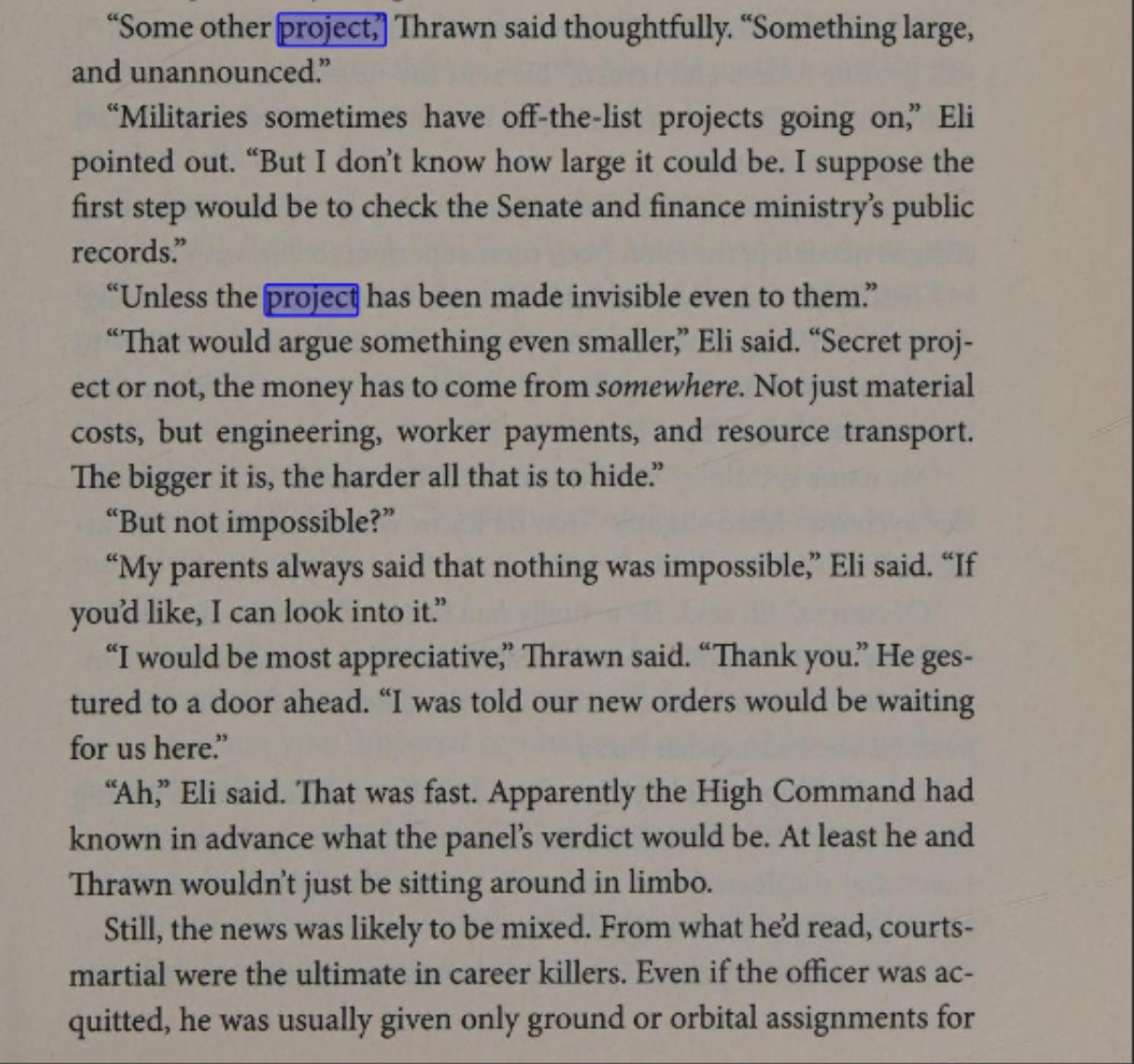
Later, Eli confirms that despite digging through navy procurement and warship programs, nothing explains the massive resource gap:
“But right now, I can’t find any building project that could be absorbing anywhere near the amount of doonium that’s been disappearing from the markets.”
“Again, nothing obvious. If something’s going on, it’s being very well hidden.”
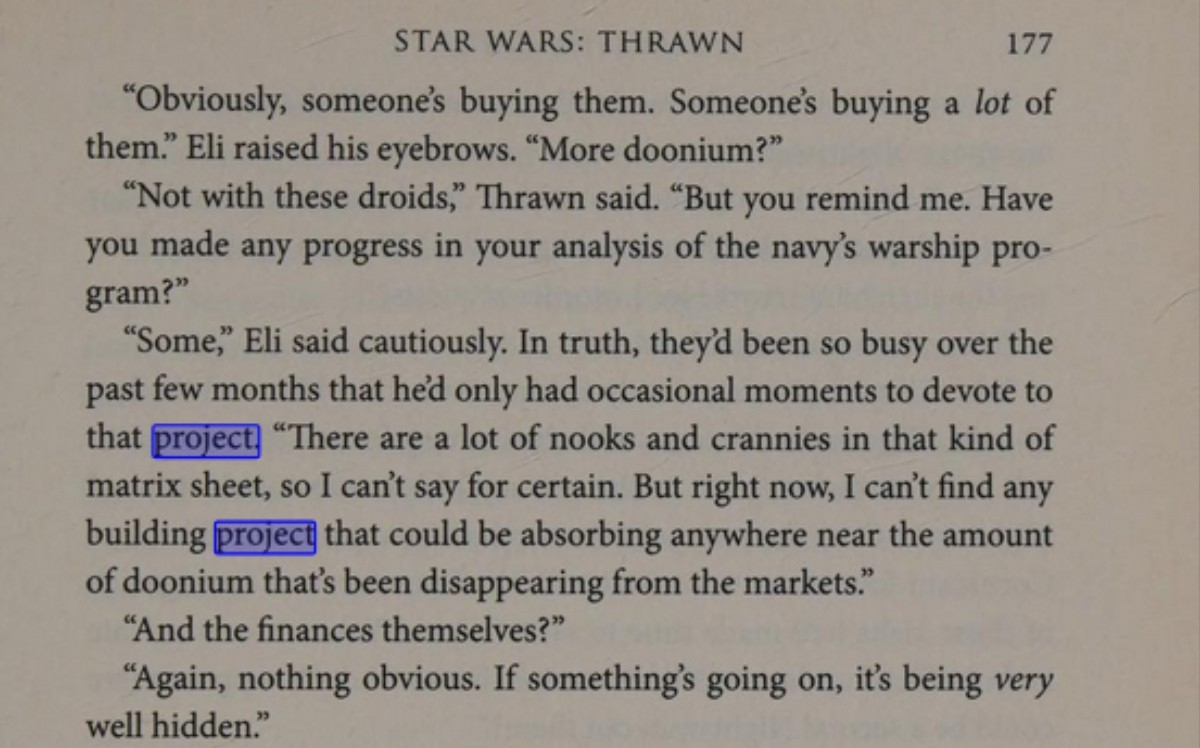
Thrawn doesn’t stop at suspicion. By page 316, he drills further into the data:
“Operation, singular? You think this is a single project?”
“I do,” Thrawn said. “Consider. Hyperdrive components are being taken from supply depots, but no assembled hyperdrives are disappearing. Sublight engine components are likewise being taken, but no completed engines.”
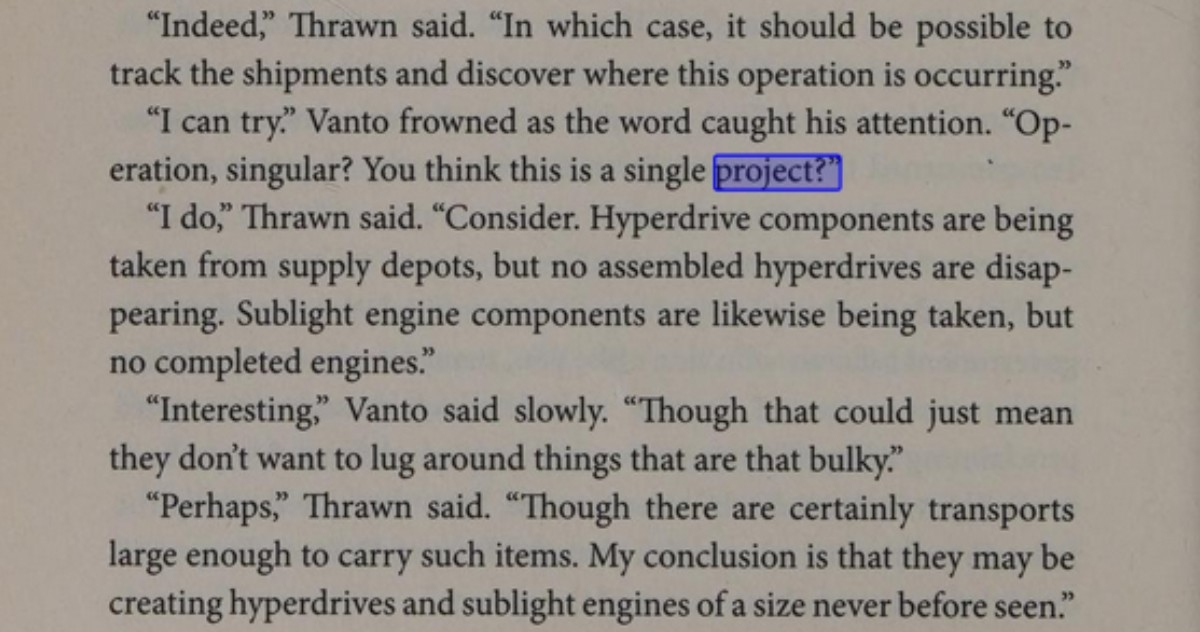
He concludes that the Empire must be funneling these parts into one massive construction. Not ships. Not bases. Something else.
This theory is independently supported by Nightswan, a rebel informant, who confirms the existence of strip-mined worlds and covert operations:
“Stories about something nasty the Empire was up to out in the middle of nowhere. The project that was sucking up all the doonium, iridium, and other metals that they were yanking out of the markets. I heard about whole planets being strip-mined.”
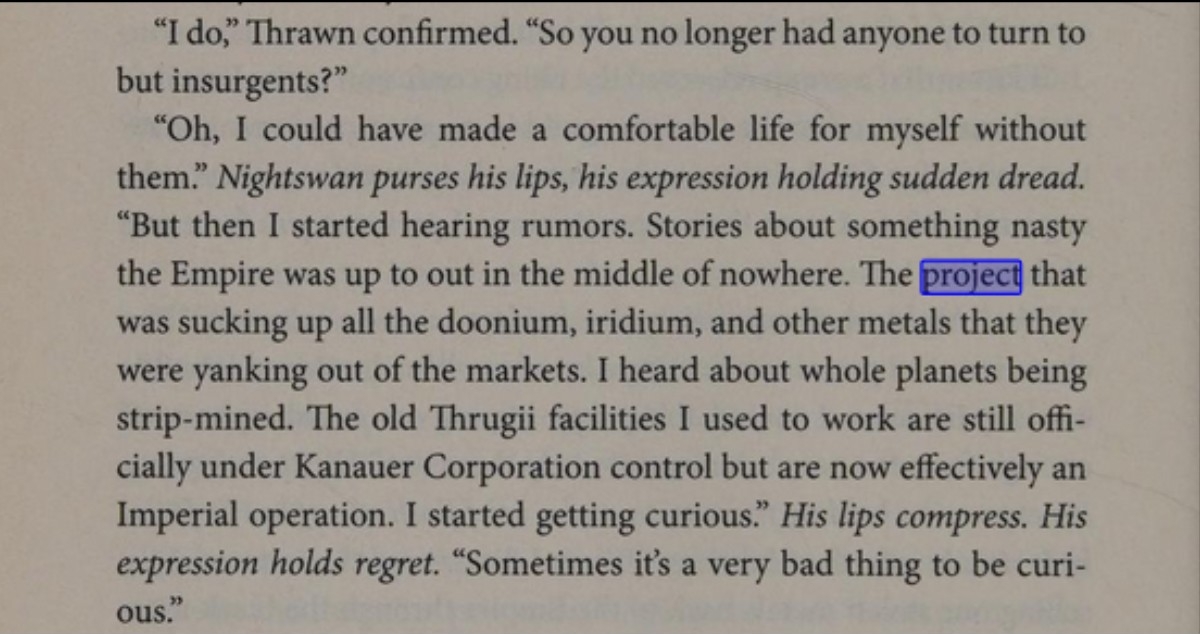
All these clues—missing materials, phantom projects, untraceable funds—point toward a singular, massive installation. And while Thrawn never says the words “Death Star,” his investigation gets as close to the truth as possible without direct access. He saw the galaxy’s logistics, and they told him everything he needed to know.
4. They Hid the Truth with Complex Logistics
To keep everything running smoothly without raising suspicion, the Empire used layers of logistical cover. Parts were produced at thousands of different facilities, often disguised as pieces of other military projects. Then they were shipped through fake civilian companies or transferred mid-route to keep the origin and destination unclear.
For example, in Rebels, there’s an episode where the Empire moves a kyber crystal inside a disguised civilian transport. It’s later transferred to a Star Destroyer in deep space—far from anyone who could witness it.
On paper, materials were listed under other initiatives, such as shipbuilding or energy infrastructure. In some cases, deliveries “disappeared” from records altogether. Only the most sensitive shipments—like kyber crystals or superlaser parts—went through direct routes, and even then, only under heavy security.
5. Ruthless Enforcement Made Leaks Impossible
Anyone who found out too much didn’t last long. The Empire enforced total secrecy through fear, execution, and censorship. Entire species were wiped out to protect the project’s secrecy—most notably the Geonosians.
In Catalyst, Krennic regularly eliminated scientists who questioned the real purpose of their work. In Andor, we see how tightly prisoner labor was controlled. Communication was limited, information was classified, and any opportunity to leak information was sealed off.
The ISB made sure even high-ranking officials stayed quiet. And if someone ever did try to leave or share what they knew, they disappeared. For the Empire, protecting the secret was worth any cost.
6. Even the Rebels Didn’t Believe It
What really helped the Empire? Most people didn’t believe something like the Death Star was even possible. The idea of a space station that could destroy entire planets sounded like propaganda or exaggeration.
In Rogue One, when Jyn Erso and Bodhi Rook try to explain the Death Star’s existence, the Rebel leadership doesn’t believe them. Even Han Solo laughs off the idea in A New Hope: “It’s too big to be a space station.” People assumed the Empire was building another fleet or base—nothing more.
By the time the truth came out, it was too late.

